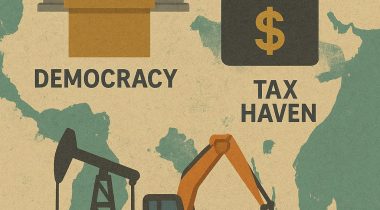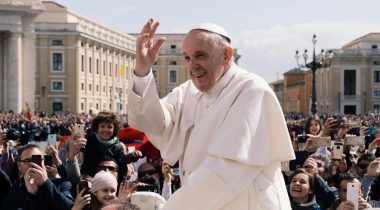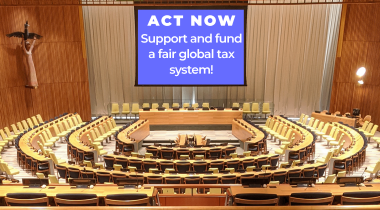
Matti Ylonen ■ The pitfalls of over-reliance on economics research in corporate tax policy

In rare cases when academic research attracts political attention, the results can be dramatic. An illuminating example of such an impact is an episode where a single review article became the chief justification for a drastic corporate tax rate cut with a direct budgetary impact of around 900 million euros. A close reading of the aforementioned article reveals caveats that undermined the anticipated policy goals of the reform. These caveats were not reflected upon in the public debate. The episode highlights the perils of relying on one branch of economics as a chief source of evidence in the design of tax policies.
The case study introduced below draws from our peer-reviewed article titled Conceptualizing Epistemic Power: The Changing Relationship Between Economic Policy Paradigms and Academic Disciplines, published at the Accounting, Economics and Law journal. It continues the debate instigated in a 2016 blog post that Nicholas Shaxson published in this blog under title Corporate tax cuts: why the old analyses don’t stack up any more (did they ever?), which drew from another blog post by Rasmus Corlin Christensen. At the heart of this discussion is a long-standing dilemma: can the negative budgetary impact of tax cuts be offset by an increase in economic activity? The case study also raises an important follow-up question: what forms of research are required to answer this question in different national settings?
Finland and the global financial crisis
Finding answers to these questions requires going back to early 2011. Finland had just adopted an unusually broad six-party government, with parties from left, right and the center of the political spectrum. The governmental program reflected the 1990s-style tax policy consensus, characterized by conceding to the gradual race to the bottom in corporate tax rates. The governmental program envisioned lowering the corporate tax rate by one percentage point to 25%. This promise was fulfilled (and even exceeded) in 2012, with a new tax rate of 24.5%.
If the story had ended there, it might just have been a typical example of the race to the bottom in corporate taxation. However, the government soon decided that the economic crisis necessitated further action. This paved the way to the drastic reform of 2014, which reduced the corporate tax rate from 24.5 to 20%. There was an urge to do something “big” to send a signal to the markets and to bolster Finland’s ‘competitive advantage’.
The case for the cut
The decision was politically contentious for a six-party government with deep ideological rifts. In the words of an insider, the tax cut “was an undesirable expense for the political left, and the smaller the cost, the easier it was to settle on the reform”. The static downward impact on tax revenues was estimated at around 900 million euros.
The preparatory stage of the reform was unusual in its reliance on the international economics literature, and in sidelining the lawyer-dominated Tax Department of the Ministry of Finance (MoF). These two factors facilitated the entrance of the anticipated – and highly contested – dynamic effects of the tax cut in the political debate. In other words, the negative budgetary effect was expected to be mitigated through the resulting increase in employment and investment. To assess this impact, an idea emerged of conducting impact estimates on the behavioral effects of the tax cuts that would broaden the corporate tax base. The MoF tasked a state-funded economic research institute to conduct such study.
In an unprecedented move, the government projected that broadening the tax base would help to cover more than half (50–62%) of the annual revenue loss. The estimates relied on studies of tax elasticity of corporate tax reforms in the international economics literature. These impact estimates in turn relied on a dynamic, applied general equilibrium model, based upon a number of contentious assumptions. Impact estimates failed to specify a timeframe for the emergence of such dynamic effects. The chosen approach was highly controversial even within the MoF. High-ranking civil servants found meaningful short-term impact unlikely.
Several preparatory memos of the tax cut referred to a 2008 review article written by Ruud de Mooij and Sjef Ederveen, which happens to be the same piece of analysis discussed in the aforementioned blog posts by Shaxson and Christensen. The crux of the matter relates to the question of tax elasticity, which refers to the ways in which tax base reacts to the changes in tax rate. Advocates of tax cuts often argue that tax rate cuts tend to create or attract new economic activity. This is a questionable idea for the reasons we will discuss in detail below.
The power of a paper
After reviewing 427 studies, de Mooij and Ederveen suggested that when governments cut corporate taxation, the ensuing broadening of the tax base carries potential to offset part of the revenue loss. In the Finnish debate, this was interpreted to mean that a 4.5 percentage point drop in corporate tax rate would result in a self-financing rate of 62% through broadening the tax base. The article identified five sub-components for this effect: changes in the (1) the corporate legal forms; (2) the profit-shifting patterns of multinationals; (3) debt-capital ratios; (4) size of the existing foreign direct investment, and, (5) the amount of inward investments. The relative size of these components was estimated through a literature review.
Two-thirds of the dynamic effects were seen to result from the shifts of transboundary “hot money”, or, from changes in the legal form of existing economic activity. These effects are prone to react to corresponding changes in other jurisdictions. Moreover, the long-term effects of hot money on economic growth and employment are often meagre, as the governmental assessments also noted. Even the relationship between profit-shifting patterns and corporate tax rate is much more complex than anticipated. Profit-shifting is influenced by a variety of factors such as tax treaties and the capacities of tax authorities. Many commentators found the international estimates unreliable and questioned whether they could be meaningfully applied in the Finnish context. Yet, the contents of these sub-components were only vaguely debated in public, even though they involved highly controversial assumptions. Finally, as Christensen and Shaxson mention in their blog posts, the rapid changes that have upended global tax governance in the 2000s have also made earlier, historical statistical analyses of tax elasticity outdated.
It should also be noted that the de Mooij and Ederveen article saw the level of corporate tax rate as key variable in determining economic activity, which has been seen to reflect the contested idea of the Laffer curve. The article infers predictions on investment activity based on a pre-determined set of causal mechanisms that impact the cost of capital. However, empirical literature suggests that investment decisions are influenced by a myriad of reasons beyond tax rates, such as productive possibilities, market size, resources and the political and macroeconomic conditions. The type of investment most responsive to the level of corporate taxation seems to be highly mobile portfolio investment.
These uncertainties notwithstanding, this single article occupied a central role in governmental discussions on the budget framework. The article was important not only at the preparatory level, but also within the government. An expert with close knowledge of the negotiation process explains that the article was in:
“briefcases when the decision was made, it was reviewed and browsed during the process. […] If I need to name one study that was on the desks at the time, this was it”.
A cautionary tale
Resonating with the concerns we highlighted above, a lawyer whom we interviewed speculated that “perhaps there is a growing need to give policy proposals a seemingly scientific form to lend them credibility”. Hence, politicians “sometimes refrain from advancing reforms that might generate positive results according to practical knowledge of the issues at hand”. Politicians tend to favor quantitative assessments, even when they are highly uncertain.
The remarks of the interviewee quoted above are spot on. If the forms of knowledge production that guide decision-making favor abstract and formalist forms of economics research, important aspects may get sidelined. While econometric calculations can be useful in different stages of governmental preparatory work, they need to be balanced by a clear-headed understanding on the factors that drive corporations and investors and the underlying legal and accounting-level mechanisms. A sensitivity to national and historically specific contexts is of utmost importance when interpreting research.
Overall, this dramatic example of the international race to the bottom should serve as a warning sign for other countries. If it happens in a country that prides itself with endorsing evidence-based policy-making, other countries are likely vulnerable to similar turns in the narrowing understanding of evidence in policy-making.
In the international debate on corporate taxation, the OECD’s proposed introduction of a global minimum tax and a small sales-based apportionment mechanism is beset by controversy over the likely distribution of any benefits. In that context, the OECD has raised eyebrows by refusing to publish country-level estimates of the revenue impact – while multiple independent studies including from the International Monetary Fund suggest that many countries stand to lose out.
Meanwhile, the leading business lobby group has written to the OECD to demand greater involvement in the remaining process; and researchers at Oxford University have shown that the outstanding decisions in that process will effectively determine whether or not the minimum tax has a meaningful impact when introduced. The quality and transparency of evidence matters greatly.
Written with contribution by Jussi Jaakkola and Leevi Saari.
Related articles

Bled dry: The gendered impact of tax abuse, illicit financial flows and debt in Africa
Bled Dry: How tax abuse, illicit financial flows and debt affect women and girls in Africa
9 December 2025

Tackling Profit Shifting in the Oil and Gas Sector for a Just Transition

The elephant in the room of business & human rights
The millionaire exodus myth
10 June 2025

Pope Francis, 1936-2025

Urgent call to action: UN Member States must step up with financial contributions to advance the UN Framework Convention on International Tax Cooperation

The Tax Justice Network’s most read pieces of 2024

Indicator deep dive: ‘Royalties’ and ‘Services’


